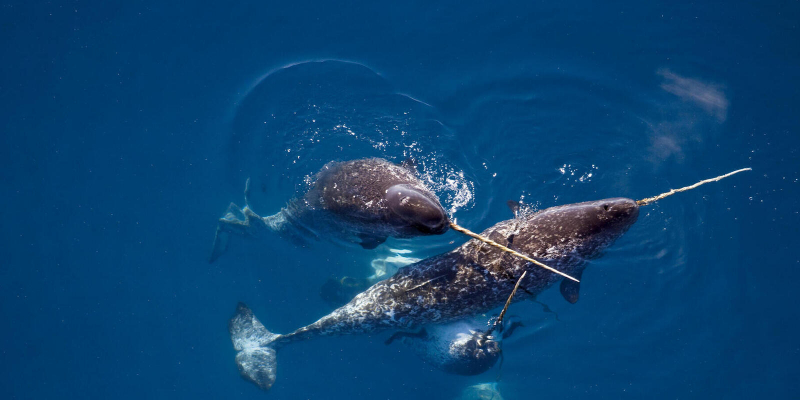The purpose behind their tusks is still up for debate
The narwhal's enormous tusk has been the subject of many historical accounts. One hypothesis holds that it can be wielded as a weapon to establish dominance, similar to peacock feathers or deer antlers, although there is insufficient evidence to support this assertion. Another person proposes that it is a strategy for courtship and mate attraction. Researchers gathered biological information on 245 adult male narwhals in 2020 over a 35-year period, tracking growth and variations in tusk length. The larger males in the study had longer tusks, which suggests that larger males are more likely to reproduce.
The most recent theory, however, contends that it functions as a kind of environmental sensor. The study claims that the tusk is permeable and packed with nerves that receive information from the environment, such as water pressure, temperature, and salinity, and relay it to the brain. The researchers fitted narwhals with a kind of "jacket" that protected the tusk from the elements to test this notion. Then, to simulate several types of sea ice, researchers pumped the jacket with water samples with differing salinities. They discovered that the narwhals' heart rates varied in response to changing salt levels, showing that they could perceive the change and respond physically to it. The findings, however, "indicate that narwhals can funnel water into their tusks to detect its salt concentration, regardless of the reason," the researchers wrote.











